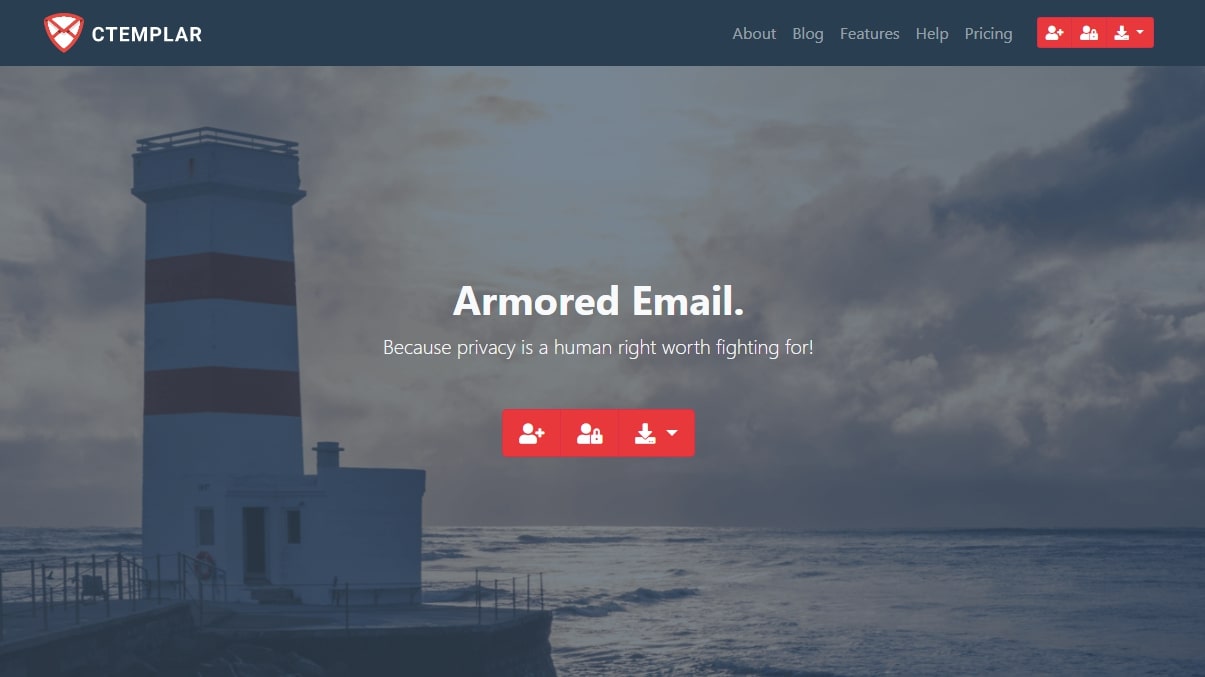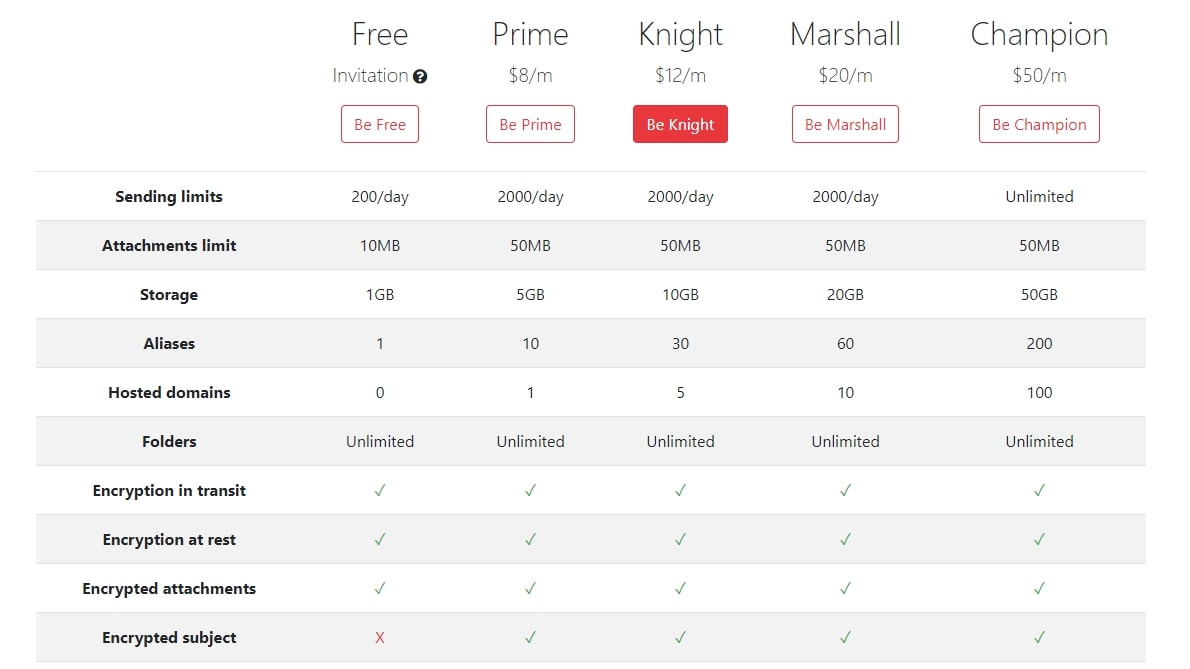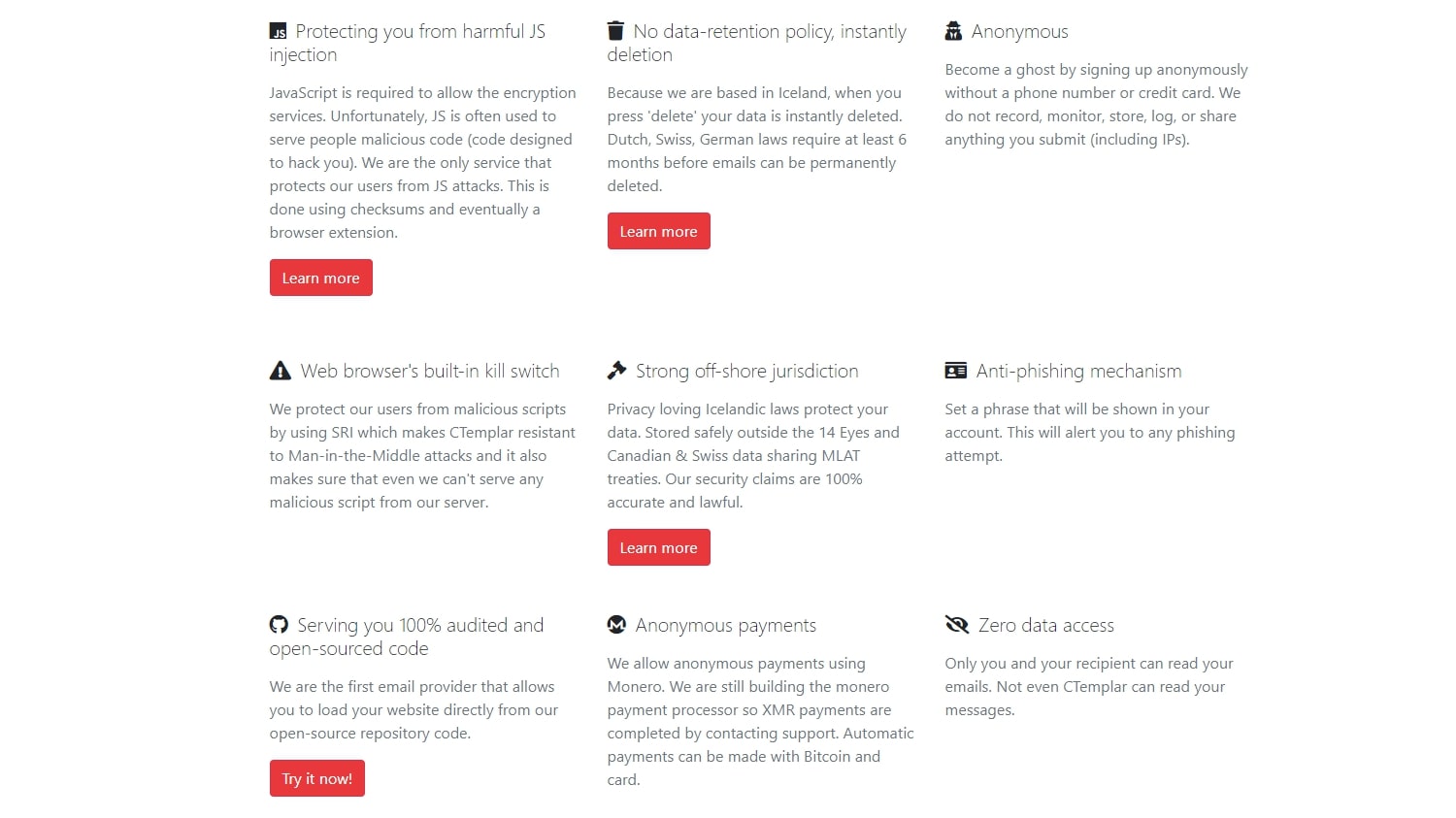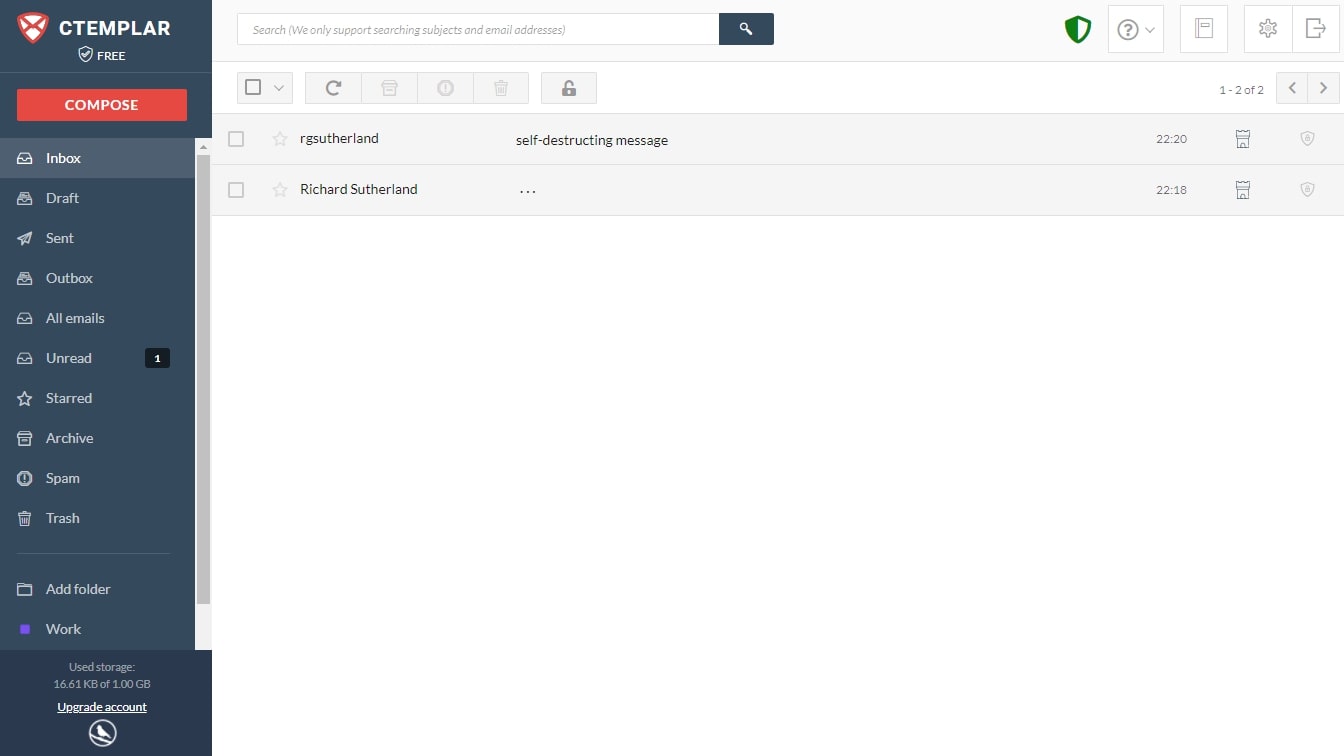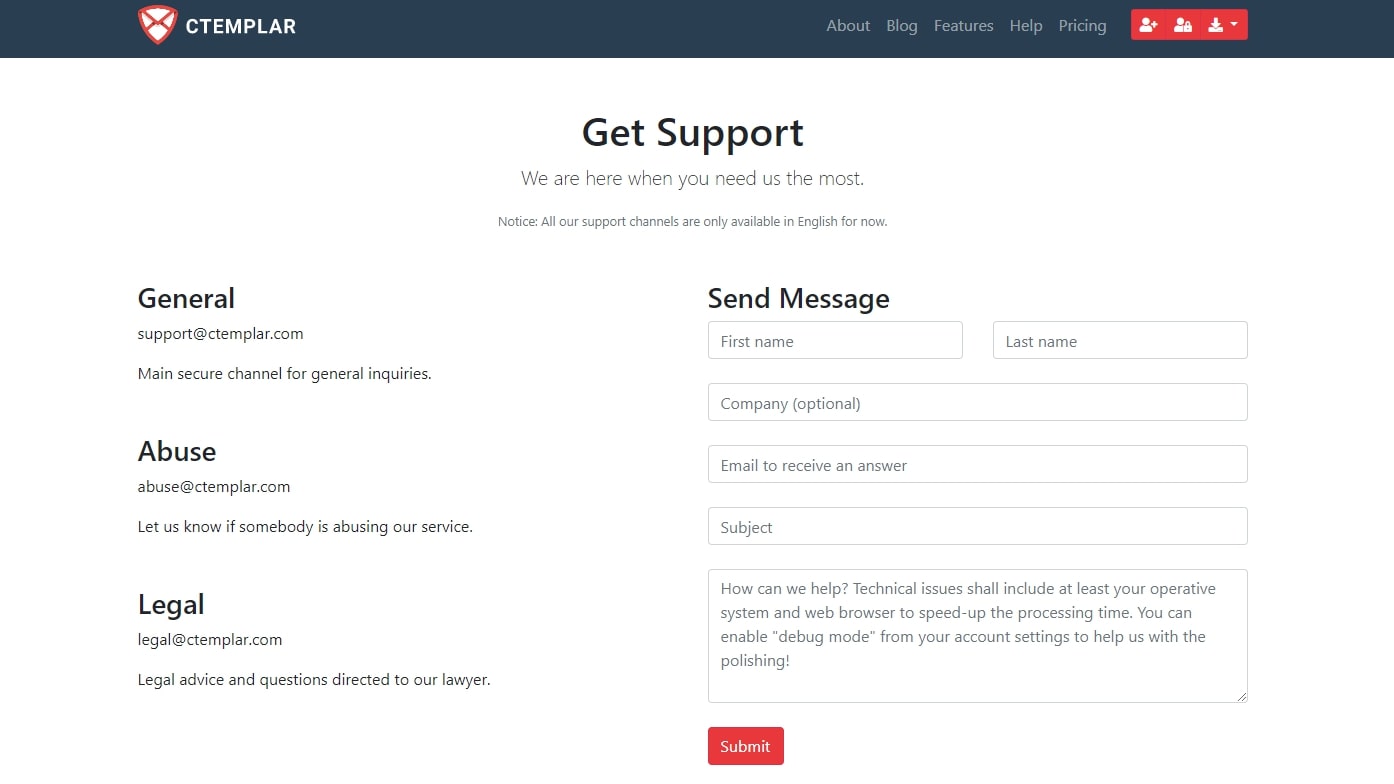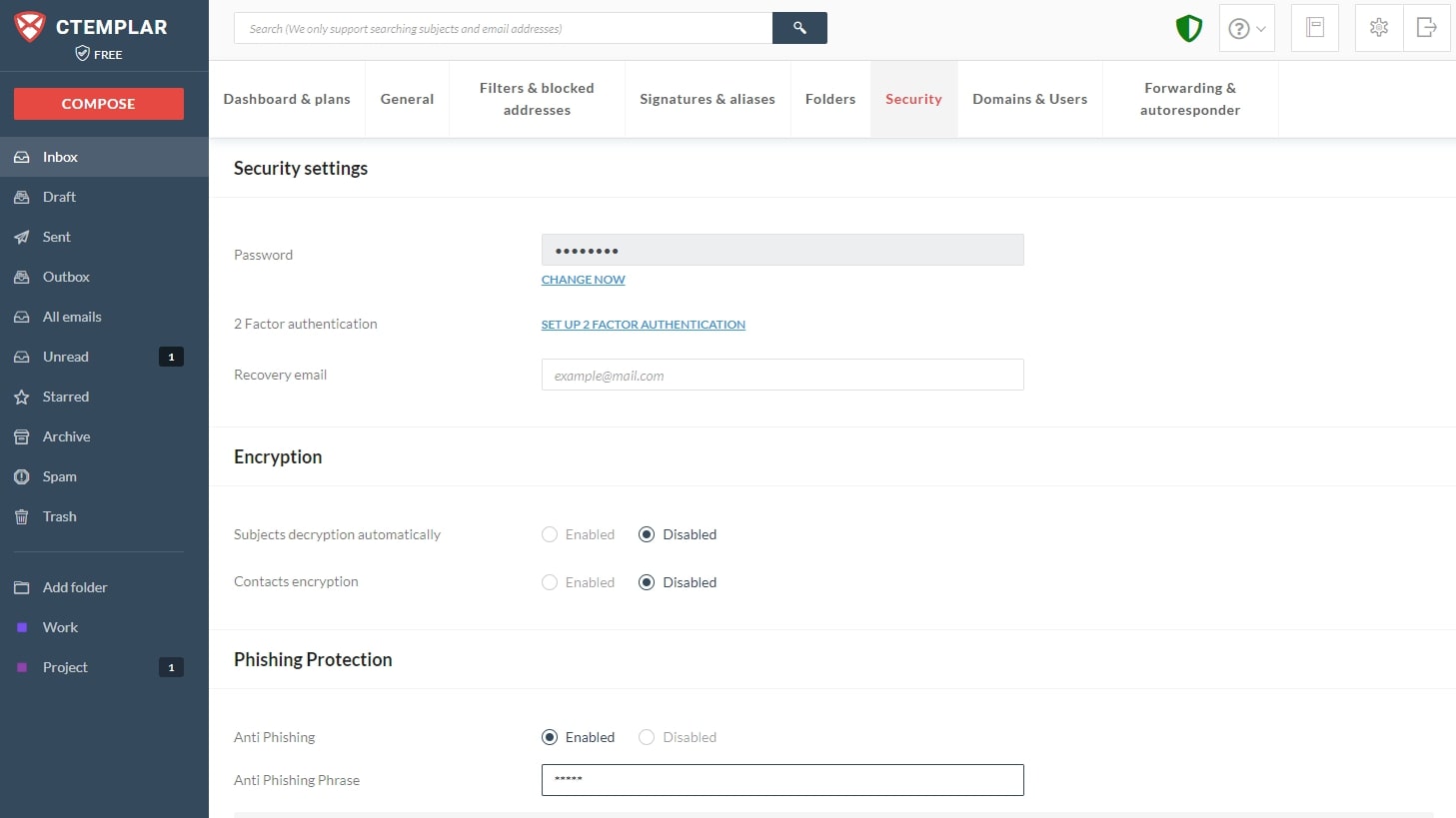TechRadar Verdict
CTemplar lacks a few features, such as IMAP/SMTP integration, but its dedicated focus on privacy and security makes it a solid competitor to more established secure email providers.
Pros
- +
No data-retention policy
- +
Anonymous sign-up
Cons
- -
No IMAP/SMTP integration
- -
Some metadata remains unencrypted
Why you can trust TechRadar
CTemplar is a secure email provider that advocates for privacy rights and online anonymity, and is one of the best secure email providers. A Seychelles-based company, it stores your emails on Icelandic servers. As Iceland has strong privacy laws and CTemplar uses zero-access password technology, the service could appeal to privacy-conscious consumers who worry about their email data being turned over to a third party.
In our CTemplar review, we look at its unique features to determine whether it’s the best secure email provider for individuals and businesses.
CTemplar: Plans and pricing
CTemplar has a free plan and four paid plans. All memberships have a 14-day money-back guarantee. Unusually, access to the free plan is by invitation only, but the company is generous with invites. On the free plan, you get one alias and 1 GB of storage space. You can send up to 200 emails per day, with attachments of up to 10 MB in size, but the subjects of your emails will not be encrypted.
Prime is the cheapest paid plan at $8/month. You can send 2,000 emails per day with attachments up to 50 MB in size. Your storage space is bumped to 5 GB, and you can use a hosted domain name and up to 10 email aliases. It also unlocks a few nice features, such as self-destructing emails, a dead-man timer, delayed delivery, and a catch-all domain.
Knight ($12/month) and Marshall ($20/month) plans simply offer more storage space, email aliases, and hosted domains. Finally, the Champion tier ($50/month) unlocks unlimited email sending and gets you exclusive beta access.
CTemplar: Features
Besides strong security, privacy, and encryption, CTemplar has relatively unique features.
For example, when you email a non-CTemplar user, you can send the message encrypted. In practice, the recipient receives a link to CTemplar, where they can read the email message securely. You can set emails to self-destruct at a certain date and time or send a message if you haven’t logged in for a specified period of time. You can delay the sending of an email until later too.
Sign up to the TechRadar Pro newsletter to get all the top news, opinion, features and guidance your business needs to succeed!
CTemplar also has the features that you’d expect from any email service, like filters, aliases, folders, forwarders, and autoresponders.
CTemplar: Interface and in use
We like the look and feel of the CTemplar user interface. It’s professional and easy to read, though we found it a little slow to react at times. It lacks refinements such as the ability to drag and drop emails into folders, but CTemplar informs us that this will be added in 2021.
CTemplar has desktop apps for Windows, Mac, and Linux that are identical to the web-based interface. You can use the mobile apps on Android and iOS too, which have received good reviews in their respective app stores.
CTemplar: Support
There are around 60 help topics in the CTemplar knowledge base that are regularly kept up to date. CTemplar has a small team but customer support is top notch. You can email the company or send a message via the website. In our experience, we received replies within minutes. The CTemplar team is also active on the subreddit /r/ctemplar, answering customer queries quickly.
CTemplar: Security
CTemplar is more secure than the vast majority of email services on the internet. Your emails are stored and transmitted in an encrypted format, so even CTemplar can’t read them. If you have a paid plan, the subjects of your email messages can also be encrypted, something that you don’t get with better-known secure email services, like ProtonMail. However, some metadata is still stored unencrypted on CTemplar’s servers. Again, this is on the roadmap to be fixed in 2021.
CTemplar uses 4096-bit encryption to keep your email conversations, contacts, and attachments secure. It’s powered by OpenPGP.js, an open-source encryption library that’s maintained and audited by hundreds of people. With CTemplar’s zero-knowledge model, the company cannot access your encrypted data through any means, so only you and your recipient can read your emails. Your IP address is stripped from all logs, payments can be made anonymously, and if you delete your account, then your data is immediately wiped. This all adds up to a supremely secure and private service.
The competition
CTemplar has only been around since 2018, which for some people, means it’s too early to know if the service has longevity. ProtonMail is a solid alternative to CTemplar, with a long history, a great user interface, and competitively priced plans.
For a secure email provider that competes with CTemplar on encryption levels and privacy features, we like Tutanota. It’s another established name in the industry and includes a secure calendar app where all details are kept encrypted on the server.
Final verdict
CTemplar has excellent security and privacy features, and we like that it’s in a country with strong privacy laws. It’s good to know that if you delete your data, it’s gone immediately, unlike what happens with secure email providers located in Germany and Switzerland, where your data must be kept for six months.
Its highlights include encrypted email subjects and anonymized IP addresses. The extra email features are neat too, like self-destructing emails, delayed delivery, and a dead-man timer.
CTemplar still has a few areas where it can improve, such as adding encryption of metadata and improving the user interface. It also doesn't support IMAP/SMTP integration with email clients. But even as it stands, it’s an excellent choice for anyone looking for complete privacy of their emails.
- We've featured the best email hosting.
Richard brings over 20 years of website development, SEO, and marketing to the table. A graduate in Computer Science, Richard has lectured in Java programming and has built software for companies including Samsung and ASDA. Now, he writes for TechRadar, Tom's Guide, PC Gamer, and Creative Bloq.
